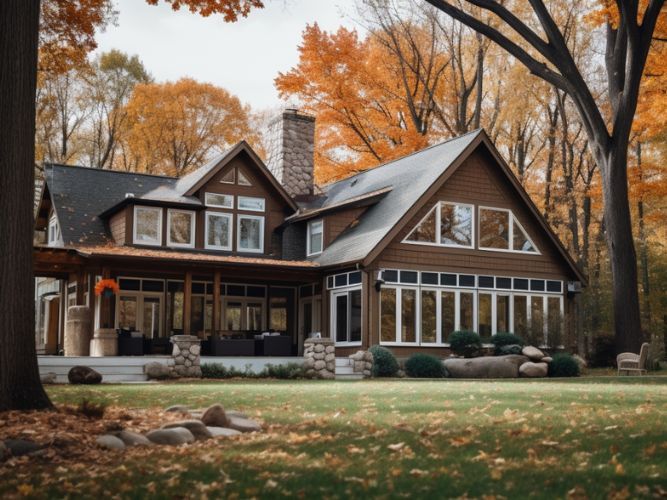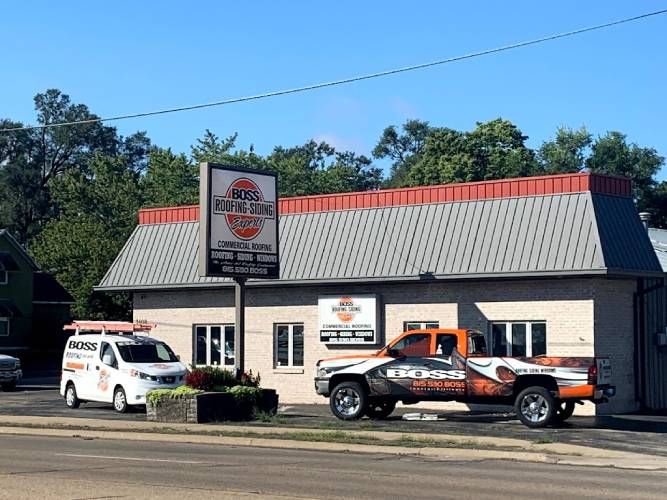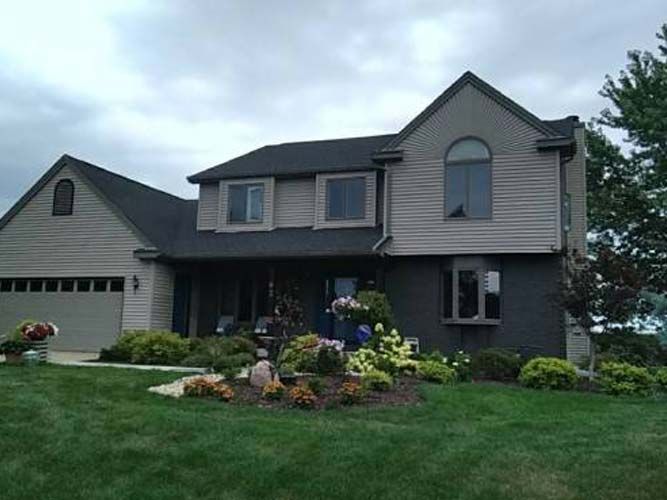Maximize Natural Light in Shorter Days: Upgrade Your Windows This Autumn
The use of windows is key to enhancing natural illumination throughout the year. As the seasons change, it is important to understand the best window types for optimizing daylight as well as tips for window placement and design for maximum light in the fall. Not only are these techniques aesthetically pleasing, but they can also provide meaningful energy savings associated with natural light optimization in the fall.
The Role of Windows in Enhancing Natural Illumination
Windows can play a significant role in the enhancement of natural illumination. When they are strategically placed, they can help to maximize the amount of natural light that streams into a room. There are multiple designs that can be used to optimize the flow of natural light and energy throughout the room. For instance, indoors arched windows allow light to enter from various angles, while double-hung windows create a more consistent feel. Additionally, tall windows can be great for high ceilings which make the space feel larger and brighter.
On the other hand, tinting windows is also an effective method of improving natural illumination around a space. By utilizing a tinted film, a room can filter out some of the harmful UV rays and overheating emanating from the sun. Similarly, multiple coats of paint can help to reflect incoming light onto the interior walls of a room or building. Interior designers often utilize sheer, light-colored fabrics in order to create a soft, inviting atmosphere that maximizes the diffusion of natural light.
In contrast, the shades, blinds, and curtains used in window coverings can also play an important role in controlling the amount of natural light entering a room. These components are great for manipulating both the flow and quality of light, regulating the temperature, and participating in an overall architectural design. As a result, adjusting these components can create a personally comfortable space. Consequently, windows are a great tool for making any space feel brighter and more open due to the effects of natural illumination.
Best Window Types for Optimizing Daylight
Daylight can be an important source of natural light for buildings, reducing the need for artificial lighting and resulting energy costs. However, choosing the right type of window is essential for maximizing the amount of daylight that enters a building. Generally, any large glazing surface and lightly colored frames are the ideal combination for windows that promote natural light. Additionally, glazing surfaces should be as unbarred as possible, with the glazing area taking up as much of the window as possible.
Casement windows are considered the best window types for maximizing daylight. This window design features a single, hinged sash that opens outward, as well as panes that can be locked in different opening positions for better ventilation and natural light. Moreover, awning windows are single-sash windows hinged at the top, allowing them to swing outward, which also allows for plenty of ventilation and natural light.
On the other hand, double-hung windows are equally as good for daylight optimization, as their operable sashes can be tilted and cleaned from the inside. Furthermore, their two sashes provide more ventilation and create a draft. In addition, hopper windows typically have single sashes that open inward, allowing in natural light while still retaining privacy. This window type opens outward from the bottom, making it ideal for areas where natural light is needed but the window sill needs to stay closed.
Similarly, sliding windows are great for natural lighting, as they allow the sashes to glide, giving more coverage area for allowing natural light into the room. Furthermore, combination windows are combinations of different pre-existing styles of windows, offering enhanced ventilation and natural light control.
For instance, bay and bow windows, which are projections built out from the wall of a building, can also be a great way to maximize light in a room. They allow for more window area by projecting out of the wall, and therefore more natural light. Clerestory windows, which are tall, narrow windows placed near the ceiling, are also a great option when looking to maximize natural light.
Therefore, there are a variety of window types that can be used to optimize natural daylight in a space. As a result, taking these factors into consideration is essential to ensure windows are installed that increase daylight, reduce energy costs, and create an efficient and comfortable environment.
Tips for Window Placement and Design for Maximum Light In Fall
When it comes to maximizing the light a window brings to a room during the fall, proper placement and design is key. Window placement to a south-facing view should be the main priority when designing a space. If reflective surfaces such as mirror, water features, or large planters are placed near windows, they can help increase the reflection of light. On the other hand, if walls or planters are placed too close to windows, they can block out the light; therefore, having a bit of space between them is important. In addition, larger windows are the most beneficial for light since they have larger glass areas and frames that are not too close to the space. However, if you don’t have the right space for larger windows, thinner frames on other windows can help bring in more light. Similarly, windows should be positioned near to each other in order to maximize the light.
Using light colors and curtains can also help enhance the brightness in a room as they reflect the sun’s light rays. As a result, bright pastels work well for the window curtain options. For instance, a light blue, green, yellow or pink are good options, as they indicate a sunny atmosphere. In contrast, dark curtains or blinds should be avoided as they absorb sunlight and can create a dark atmosphere indoors. Consequently, lighter materials are best used for window treatments during the fall. Thus, proper placement and design with lighter color choices can help accentuate more brightness in a room during the fall.
The Energy Savings Associated with Natural Light Optimization In Fall
The fall season brings cooler weather along with decreased amounts of sunshine, which can lead to higher energy bills for businesses who are not utilizing natural light within their facilities. Therefore, the optimization of natural light in the fall can be beneficial for a business, as they can potentially decrease their monthly energy costs by up to 20%. In addition, high-efficiency window glazing, such as triple glazing, can further reduce unwanted solar heat gain in warmer climates. Moreover, proper shading of windows and reflective surfaces can also promote the efficient use of natural light, providing an environment with an ideal amount of sunlight for both employees and customers alike.
For instance, techniques such as automatic controls or timed switches can be installed near windows to monitor the amount of light entering a space. This allows for the space’s light levels to adjust as the season goes on and the amount of sunlight changes. Similarly, reflectors and light shelves can also be used to maximize the amount of natural light that is entering a room. By reflecting the light off the ceiling, the space will be evenly lit, which in turn relieves the strain on the building’s HVAC system. Furthermore, the use of beige and pale-colored curtains with a vinyl coating on the inside can help limit the amount of sunlight that reaches the interior of a room, in turn regulating the room’s temperature and the amount of light within the space.
As a result of implementing natural light optimization techniques in the fall, not only will businesses be able to conserve energy, but they will also benefit from reduced maintenance costs associated with the HVAC systems. In contrast with traditional methods, natural light is an affordable and relatively quick fix for businesses looking to improve the efficiency of their facilities. Consequently, businesses that employ natural light optimization techniques in the fall can contribute to increased productivity, lower energy bills, and overall improved comfort in their facilities.
Final Thoughts
The role that Windows play in enhancing natural illumination is a critical factor in the overall energy savings experienced in the fall. By understanding the best window types for utilizing daylight and the positioning and design of these windows, potential energy savings can be greatly increased. The key is to have windows that are both efficient and appropriately sized to ensure maximum light and warmth can be received. Additionally, by optimizing the windows for the season in which they are being used, energy savings can continue to increase. Ultimately, the careful design, placement, and selection of windows can have a significant impact on the energy savings associated with receiving natural lighting in the fall.
Frequently Asked Questions
How do upgraded windows enhance natural light?
Upgraded windows can help enhance natural light by using higher-efficiency glass that reflects more of the sun’s heat and UV rays away from your home. Additionally, upgraded windows also allow more light to enter into your home by providing less obstructions and improved frame geometry. This additional daylight can provide improved energy efficiency and a more pleasant atmosphere inside the home.
Which window materials best promote light transmission?
The best window materials for light transmission are usually those that are clear and transparent, like glass or acrylic. These materials can maximize the amount of natural light that enters a space without blocking out too much of the sun’s rays. More expensive options such as insulated glazing can also be good for blocking unwanted heat and noise, while also allowing sunlight to enter.
Can window upgrades help reduce my energy costs during fall and winter?
Yes, upgrading your windows can help reduce your energy costs during the fall and winter. Newer windows are typically double or triple-paned and filled with an inert gas that acts as an insulator, creating a barrier between the outdoors and the warmer interior of your home. This can help keep the heat in and the cold out, reducing the amount of energy you use for heating.
How does maximizing natural light improve my living space’s ambiance?
Maximizing natural light in a living space can drastically improve the ambiance by bringing in an open and bright atmosphere. Natural sunlight is known to positively impact mood, energy levels, and overall well-being, so by optimizing the amount of natural light that enters your space, you can make your home a much more inviting and calming environment. Additionally, the increased level of light can help to make a living space look much more spacious and open than it would without the extra light.









